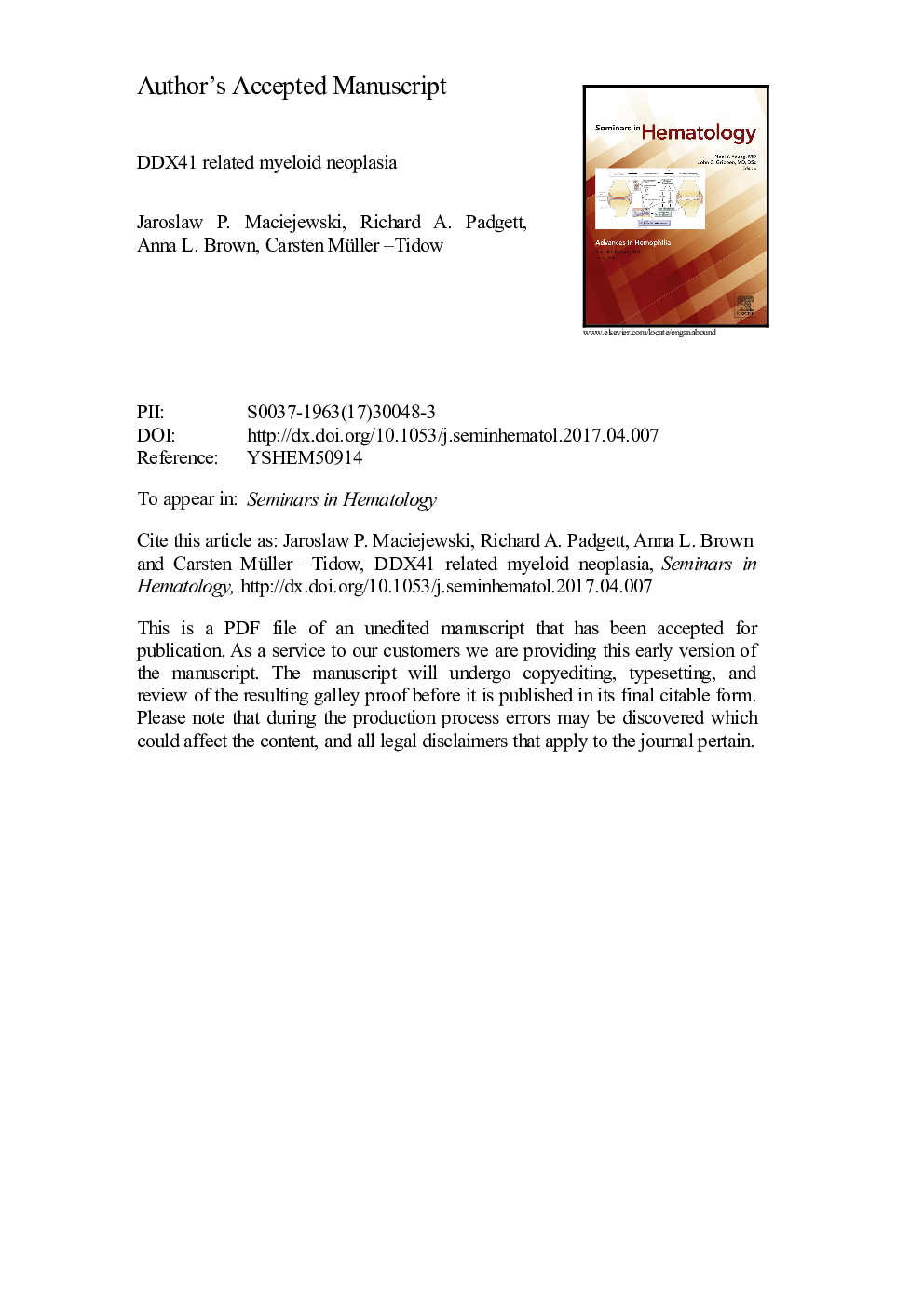| Article ID | Journal | Published Year | Pages | File Type |
|---|---|---|---|---|
| 5664420 | Seminars in Hematology | 2017 | 11 Pages |
Abstract
While early presentation of familial leukemia syndromes is typical, long disease anticipation may mask cases of familial traits in seemingly spontaneous disease. Germline mutations in DDX41 gene have been discovered in several leukemia families, as well as in mostly adult patients with seemingly spontaneous disease but having strong family histories of myeloid neoplasia. As with other familial genes, DDX41 mutation carriers can develop neoplasia through acquisition of another somatic mutation, thereby affecting both DDX41 alleles. In other patients, somatic mutations of different driver genes can substitute for acquired missense DDX41 during progression. Conversely, non-familial cases with heterozygous somatic DDX41 mutations point towards other mutations that can substitute for the germ line founder DDX41 lesions. In either circumstance, total inactivation of DDX41 appears to be cell-lethal, explaining why frameshift germline lesions have not been found to be accompanied by deletions of the DDX41 locus on 5q. The precise function of the DDX41 protein is unknown; considerable evidence suggests its involvement in RNA splicing. Thus DDX41 can be included in the now large group of mutated spliceosomal genes affected in myeloid neoplasia. However, it appears that DDX4 is so far the only example of a germline spliceosomal mutation in leukemia. Clinically, recognition of DDX41 mutated cases may have implications for surveillance, assessment of prognosis, and, perhaps, for design of targeted therapies.
Related Topics
Health Sciences
Medicine and Dentistry
Hematology
Authors
Jaroslaw P. Maciejewski, Richard A. Padgett, Anna L. Brown, Carsten Müller-Tidow,
